Andrea Castelletti
Identifying Key Drivers of Heatwaves: A Novel Spatio-Temporal Framework for Extreme Event Detection
Nov 15, 2024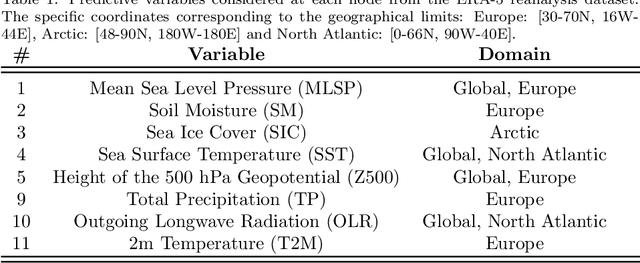
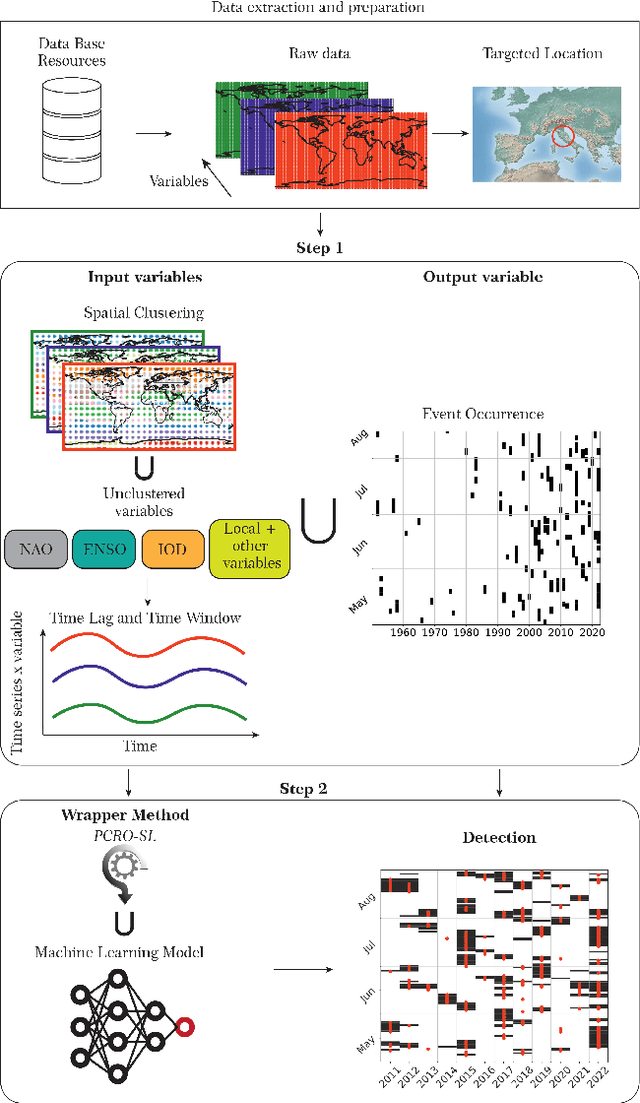
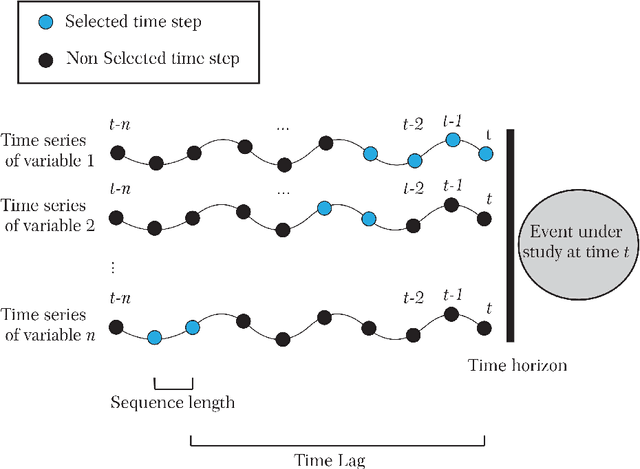
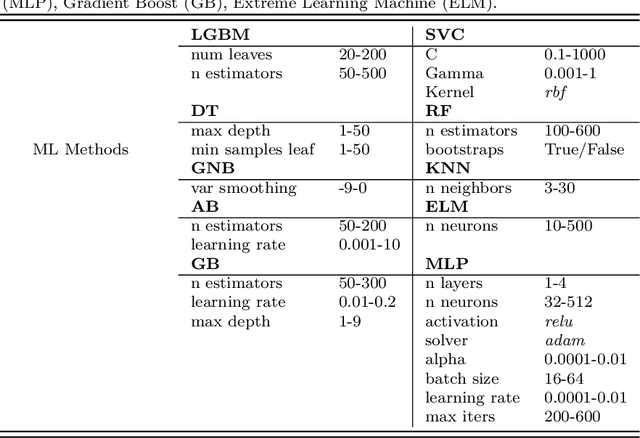
Abstract:Heatwaves (HWs) are extreme atmospheric events that produce significant societal and environmental impacts. Predicting these extreme events remains challenging, as their complex interactions with large-scale atmospheric and climatic variables are difficult to capture with traditional statistical and dynamical models. This work presents a general method for driver identification in extreme climate events. A novel framework (STCO-FS) is proposed to identify key immediate (short-term) HW drivers by combining clustering algorithms with an ensemble evolutionary algorithm. The framework analyzes spatio-temporal data, reduces dimensionality by grouping similar geographical nodes for each variable, and develops driver selection in spatial and temporal domains, identifying the best time lags between predictive variables and HW occurrences. The proposed method has been applied to analyze HWs in the Adda river basin in Italy. The approach effectively identifies significant variables influencing HWs in this region. This research can potentially enhance our understanding of HW drivers and predictability.
AI for Extreme Event Modeling and Understanding: Methodologies and Challenges
Jun 28, 2024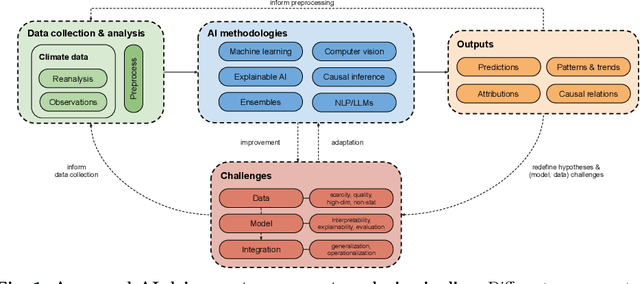

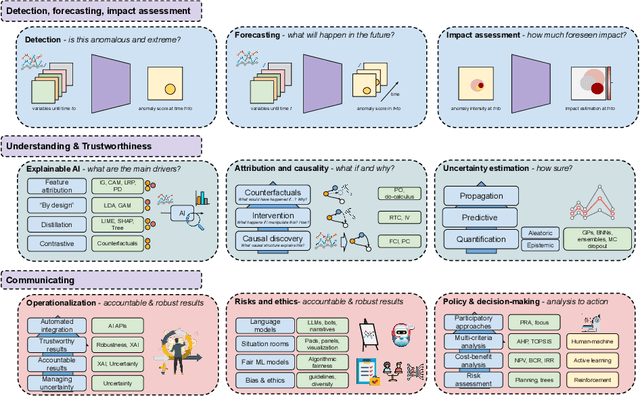

Abstract:In recent years, artificial intelligence (AI) has deeply impacted various fields, including Earth system sciences. Here, AI improved weather forecasting, model emulation, parameter estimation, and the prediction of extreme events. However, the latter comes with specific challenges, such as developing accurate predictors from noisy, heterogeneous and limited annotated data. This paper reviews how AI is being used to analyze extreme events (like floods, droughts, wildfires and heatwaves), highlighting the importance of creating accurate, transparent, and reliable AI models. We discuss the hurdles of dealing with limited data, integrating information in real-time, deploying models, and making them understandable, all crucial for gaining the trust of stakeholders and meeting regulatory needs. We provide an overview of how AI can help identify and explain extreme events more effectively, improving disaster response and communication. We emphasize the need for collaboration across different fields to create AI solutions that are practical, understandable, and trustworthy for analyzing and predicting extreme events. Such collaborative efforts aim to enhance disaster readiness and disaster risk reduction.
Scenario-based model predictive control of water reservoir systems
Sep 01, 2023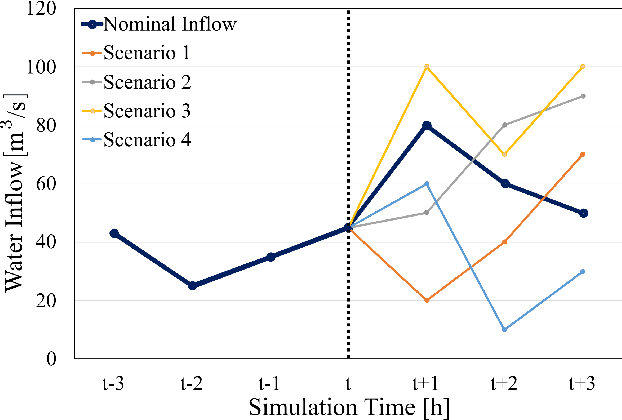
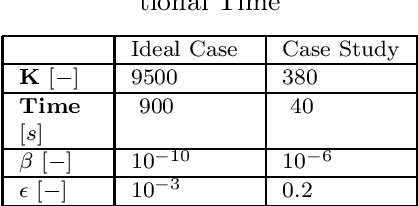
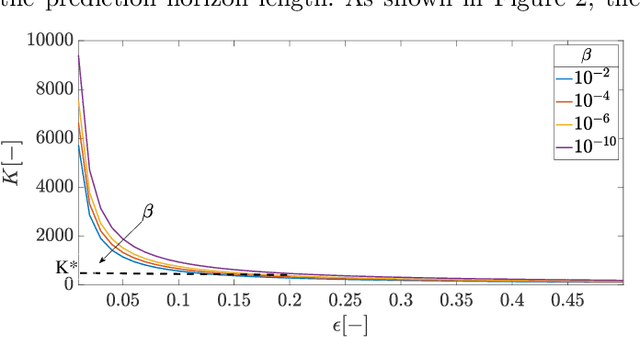
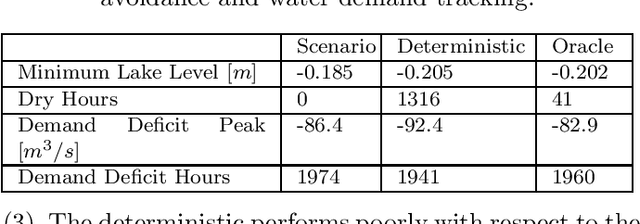
Abstract:The optimal operation of water reservoir systems is a challenging task involving multiple conflicting objectives. The main source of complexity is the presence of the water inflow, which acts as an exogenous, highly uncertain disturbance on the system. When model predictive control (MPC) is employed, the optimal water release is usually computed based on the (predicted) trajectory of the inflow. This choice may jeopardize the closed-loop performance when the actual inflow differs from its forecast. In this work, we consider - for the first time - a stochastic MPC approach for water reservoirs, in which the control is optimized based on a set of plausible future inflows directly generated from past data. Such a scenario-based MPC strategy allows the controller to be more cautious, counteracting droughty periods (e.g., the lake level going below the dry limit) while at the same time guaranteeing that the agricultural water demand is satisfied. The method's effectiveness is validated through extensive Monte Carlo tests using actual inflow data from Lake Como, Italy.
 Add to Chrome
Add to Chrome Add to Firefox
Add to Firefox Add to Edge
Add to Edge